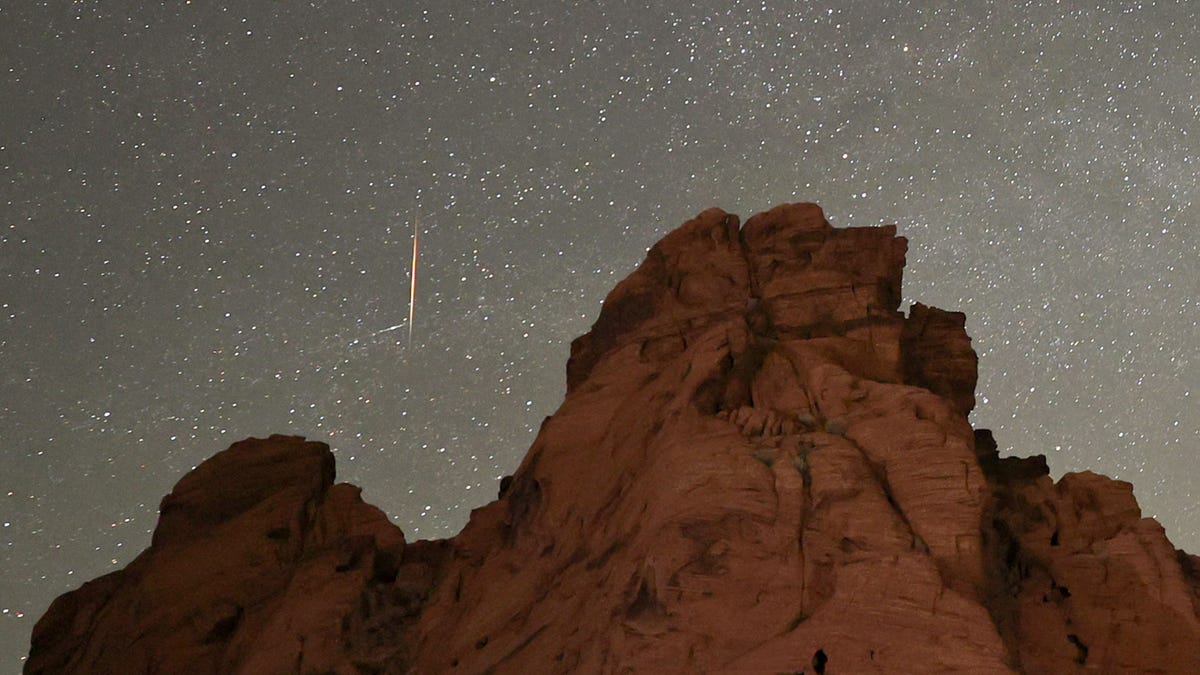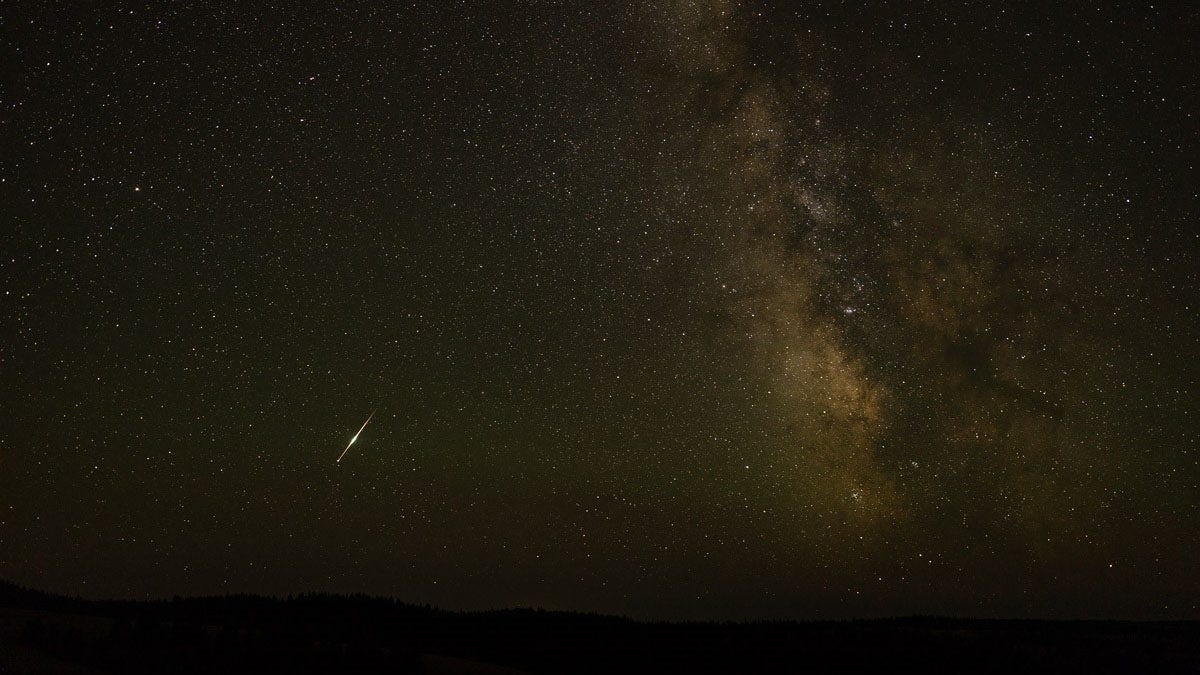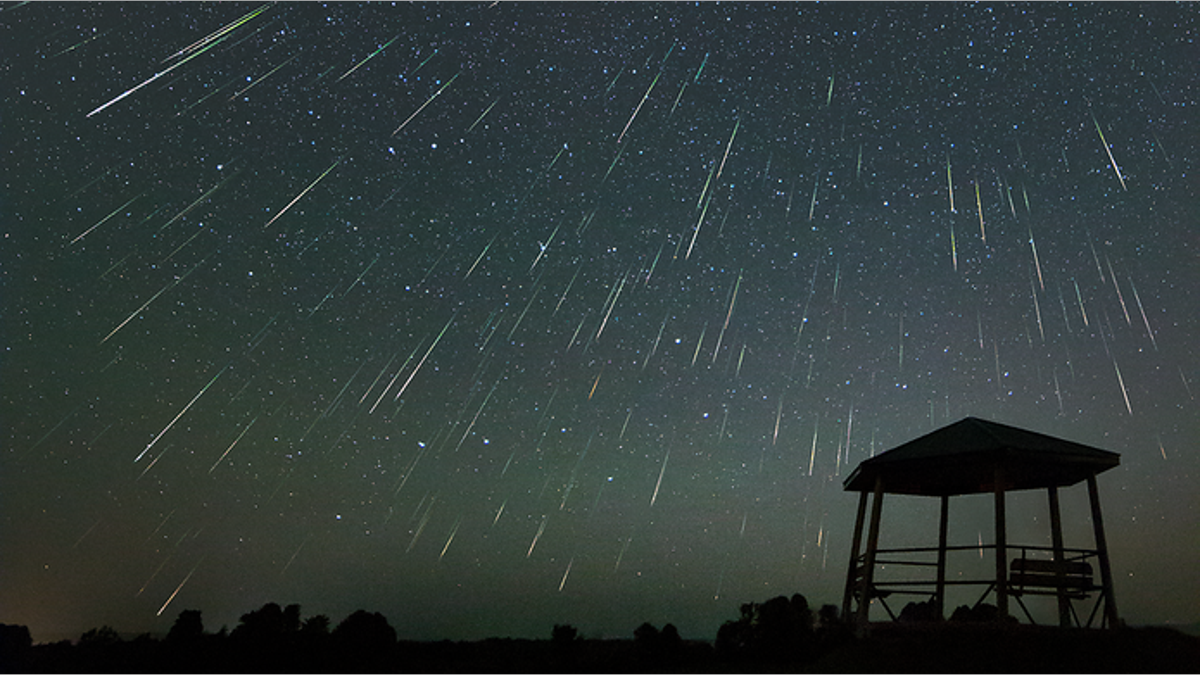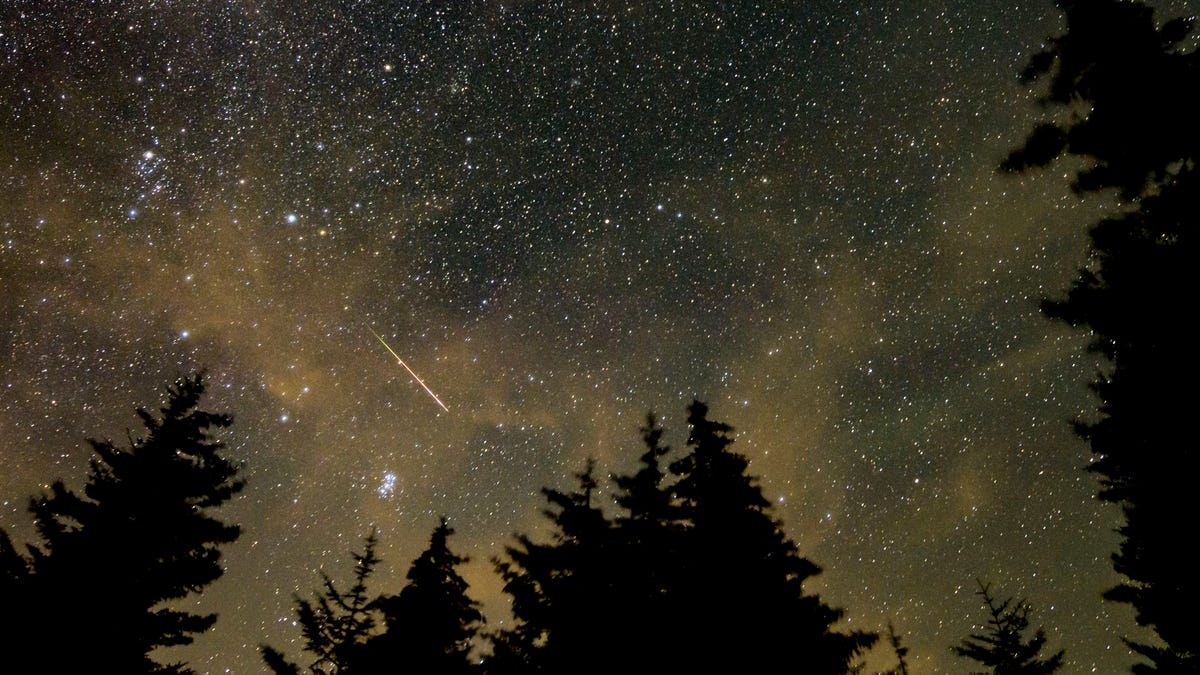Meteor flashes across the sky over St. Louis
Raw video: EarthCam.com live stream captures a bright meteor streak across the St. Louis skyline.
Goodness gracious, great balls of fire!
This year’s meteor showers have begun — and the best time to view some of the very cool space activity is fast approaching this summer.
Three meteor showers — the Southern Delta Aquariids, Alpha Capricornids and Perseids — are active as of now, according to the American Meteor Society.
The Southern Delta Aquariids meteor shower has been active since July 18 and will continue through Aug. 21.
PERSEID METEOR SHOWER BEGINS: WHEN, WHERE TO SEE IT
But peak viewing of the Aquariids is expected for the night of July 29, 2022, when the moon will only be 1% full — also known as a new moon.

A meteor streaks above sandstone formations as the Earth passes through the debris trails of a broken comet called 73P/Schwassmann-Wachmann, or SW3, producing a never-before-seen meteor shower called the Tau Herculids on May 30, 2022, in the Valley of Fire State Park, Nevada. (Ethan Miller/Getty Images)
This strong meteor shower can be best viewed from the southern tropics and along 16 latitude south, which cuts through South America, Africa and Australia.
Viewings from the Northern Hemisphere will be scarce, but there’s a better chance of catching a sighting the further south you go.
TEXAS FIREBALL LIGHTS UP NIGHT SKY NEAR AUSTIN
The best time to observe these showers is between the hours of 2 a.m. and 4 a.m.

A Perseid meteor streaks across the sky above Inspiration Point early on Aug. 12, 2016, in Bryce Canyon National Park, Utah. (Ethan Miller/Getty Images)
The American Meteor Society suggests that viewers lie comfortably in a lounge chair for at least an hour, since meteor activity is known for appearing in increments of peaks and valleys.
The Alpha Capricornids meteor shower activity runs from July 7 to Aug. 15 — and is expected to peak the night of July 30 to July 31, according to the American Meteor Society.
That's when the moon is only 5% full.
Capricornids activity can be viewed just as clearly on each side of the equator.

An Alpha Capricornid fireball is spotted at a remote site in eastern Oregon. (Wade Earle/American Meteor Society)
Even though this shower is not very strong and rarely produces more than five meteors per hour, the Capricornids are known for showing off bright fireballs.
The recent fireball sighting in Austin, Texas, may have been an alpha Capricornid, the American Meteor Society's Robert Lunsford told Fox News Digital.
With both active showers peaking at the end of July, this leads the way for the summer’s most popular meteor shower of all: the Perseids.
JAMES WEBB SPACE TELESCOPE FINDS CANDIDATES FOR EARLIEST GALAXIES
The impressive shower is active from July 14 to Sept. 1 — and is expected to peak on the night of Aug. 12, 2022, during the full moon.

Perseid meteor shower outburst, visible in the absence of the moon, taken in Ontario, Canada, in Aug 2021. (Pierre Martin/American Meteor Society)
Even though the full moon will decrease the number of meteor sightings by 75%, Lunsford said the shower produces enough bright meteors for the viewing to still be "well worth it."
Perseids can be easily viewed from the Northern Hemisphere during pre-dawn hours, according to NASA.
The shower features fast and bright meteors, which often leave long streaks of light and color behind.
The American Meteor Society reported that normal rates for these showers viewed from rural locations can hit 50 to 75 shower members per hour. NASA reported 100 meteors can be seen per hour at maximum.

In this 30-second exposure, a meteor streaks across the sky during the annual Perseid meteor shower on Aug. 11, 2021, in Spruce Knob, West Virginia. (Bill Ingalls/ NASA via Getty Images)
Perseids particles, including the famous fireballs, are released from comet 109P/Swift-Tuttle amid its return to the inner solar system.
CLICK HERE TO GET THE FOX NEWS APP
The shower is named after Constellation Perseus.
It's the area of the sky where the meteors originate at maximum activity, also known as the radiant.





















